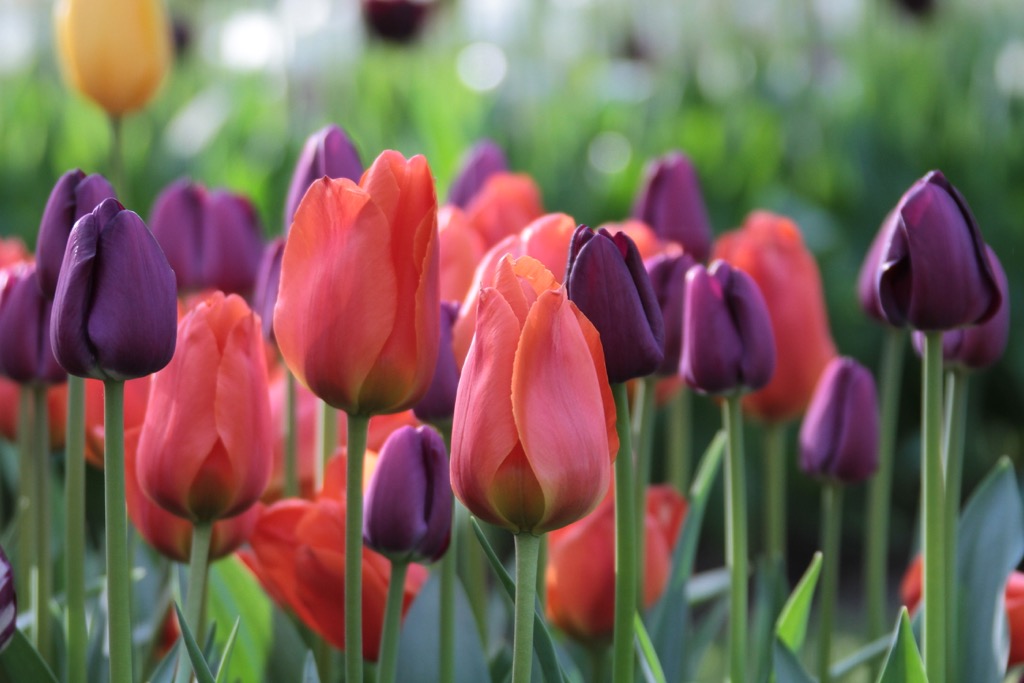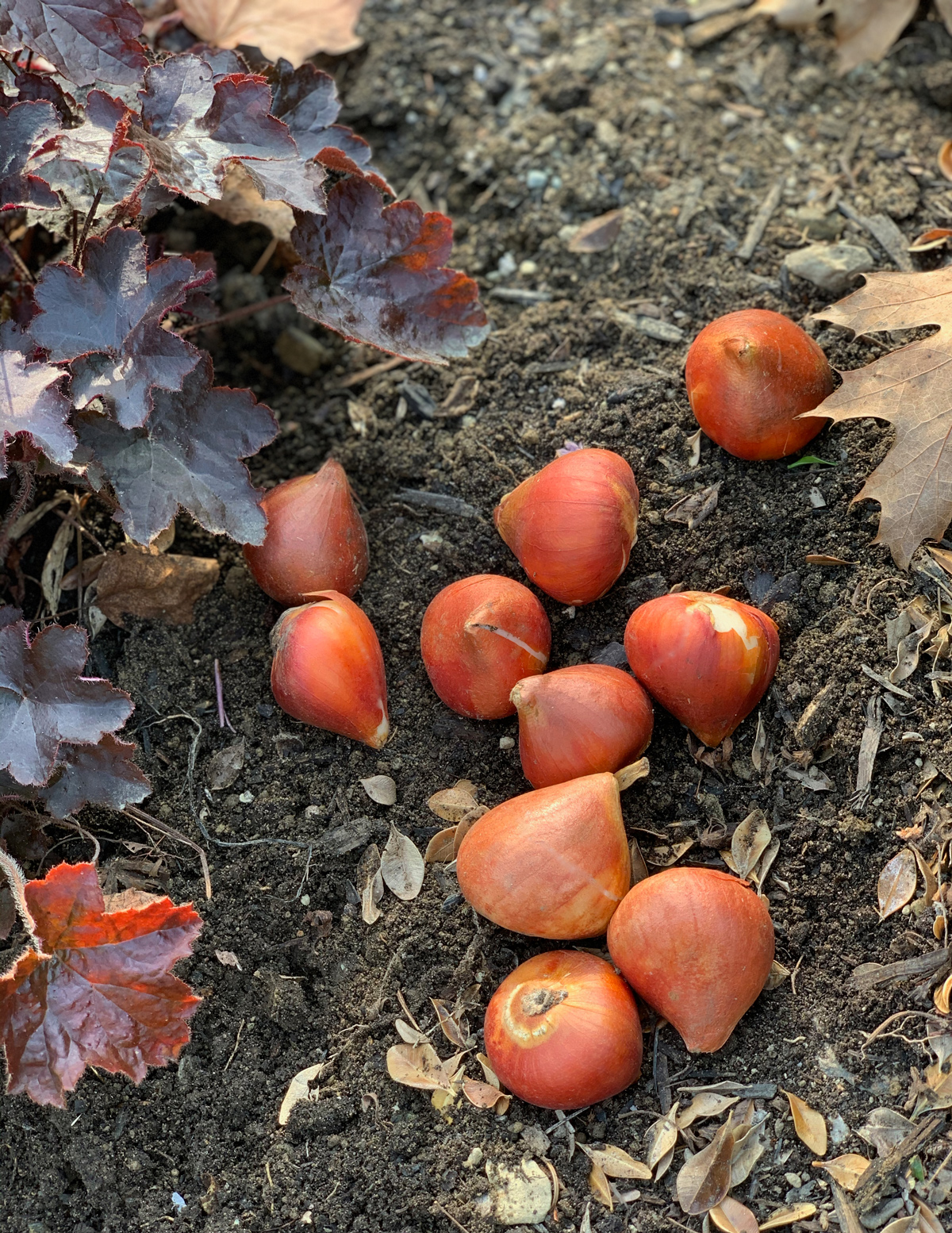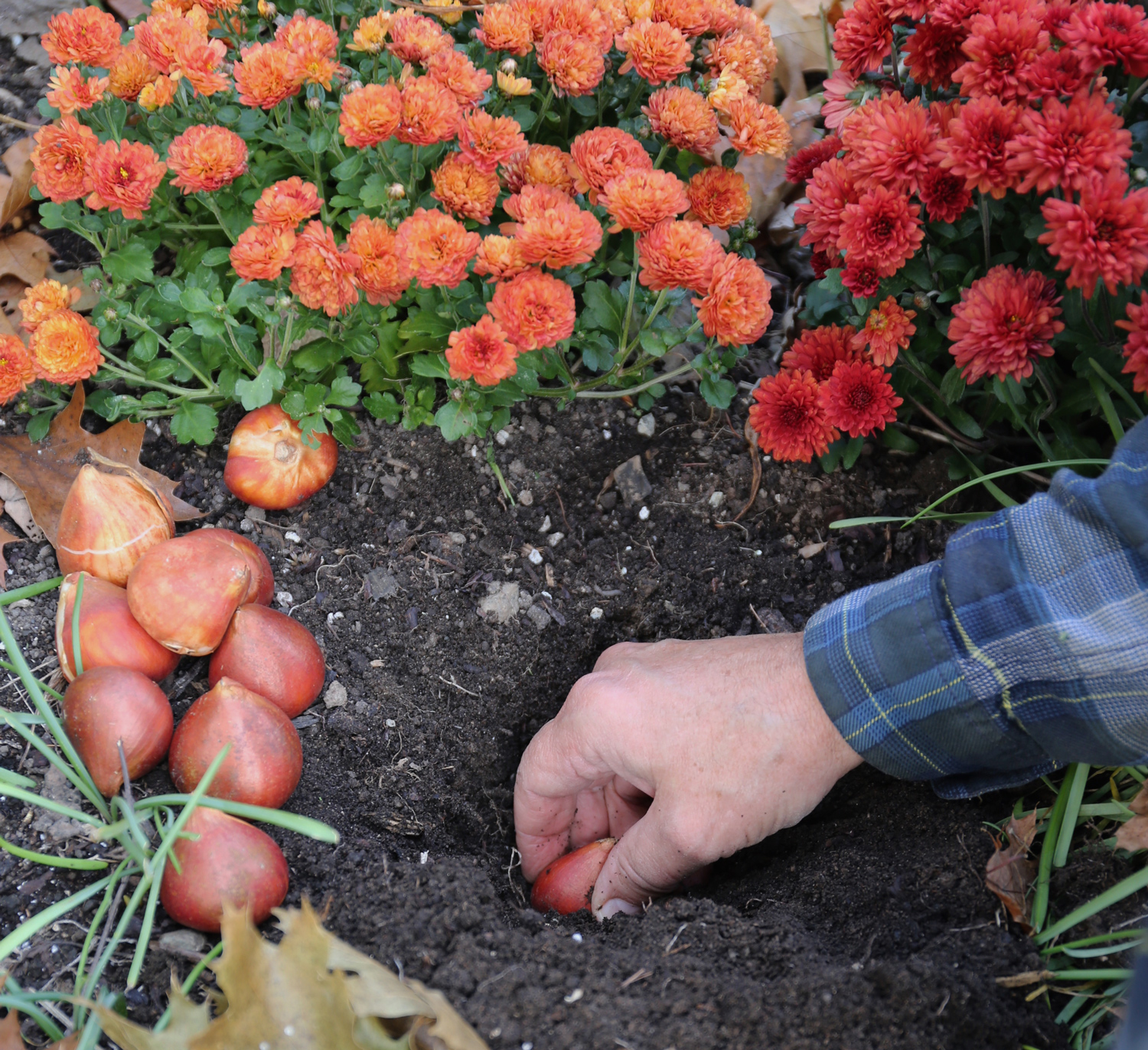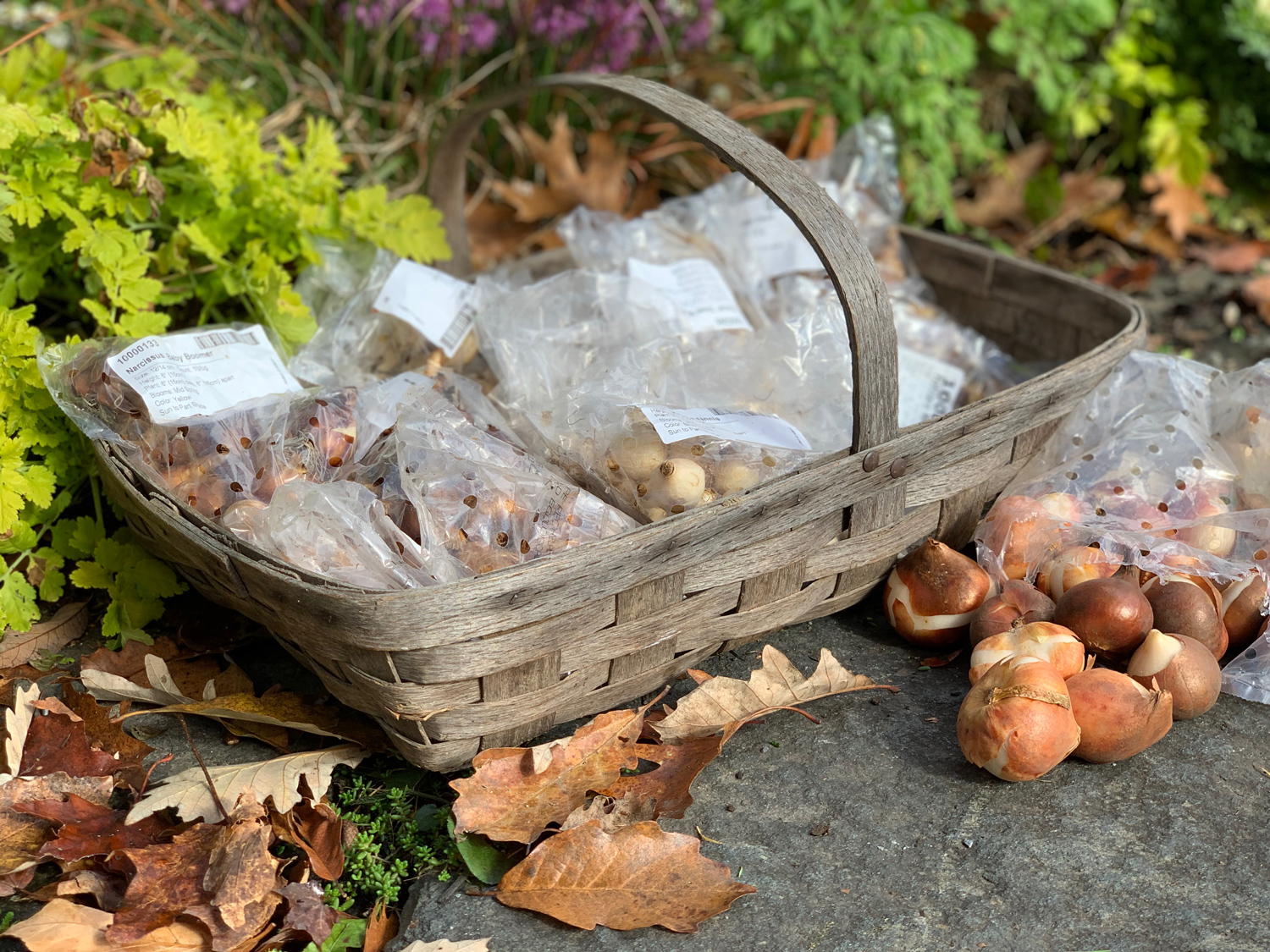How Many Bulbs Do You Need to Plant?
As with most things gardening, there are no hard and fast rules for how closely to space spring-blooming bulbs such as tulips, daffodils and alliums. But you can be sure of one thing: they always look best planted generously. Spring bulbs have far more impact when you see them as a group rather than as individuals blossoms.
Bulb spacing has little to no impact on performance. This is because fall-planted bulbs already contain everything needed to produce beautiful spring flowers. All they require is well-drained soil, enough room to develop a good root system, adequate moisture and the right soil temperature.

How many bulbs you plant is a balance between your budget and your goals. When flower farmers plant bulbs, they are growing them as annuals and want to harvest as many stems as possible from a given amount of space. The bulbs are packed so tightly that they are almost touching each other. Home gardeners are usually driven by aesthetics rather than productivity. We are striving for the biggest, most visually pleasing display we can afford.

General Tips for Spacing Fall-Planted Bulbs
If you compare bulb spacing recommendations, you'll find they vary widely. Some say to plant tulips at 5 bulbs per square foot. Though planting the bulbs this sparsely will save money, you may be disappointed by the show. For a more impressive display, you'll want to increase the density to 9 or even 12 tulips per square foot.
Note that most recommendations assume you are planting an area with nothing but bulbs. In practice, gardeners usually need to work bulbs in and around other plants. When estimating how many bulbs you'll need, be sure to make adjustments for areas that are already occupied by other plants.

Annual vs Perennial Bulbs
Bulbs that are grown as annuals, such as most tulips and hyacinths, are usually planted quite closely together. When the flowers are fully open, each one should have its own air space, but not much more than that. Aim for the blossoms to be just a few inches apart.
Daffodils call for a slightly different approach. Since they are perennials and will multiply over time, it’s good to start them out with a little more room. Give large daffodil bulbs about 5” of space between each bulb; for smaller bulbs, you can allow just 3” between bulbs. Your daffodil planting may be a little sparse the first spring, but after a year or two, the bulbs will increase in number and completely fill the space.
Small bulbs such as muscari, crocus, snowdrops, scilla and chionodoxa also need room to multiply. These bulbs look best planted in groups with irregular spacing both within and between the groups. Dig out a small planting area and place 7 to 12 bulbs so the distance between each bulb varies from 1" to 3". Cover the bulbs and then move a foot or two away, dig another hole, and plant more in the same fashion.

Estimating the Number of Bulbs
To estimate how many bulbs you’ll need for a given area, start with a rough estimate of the square footage. For example, if you are planting along a fence or the front edge of a woodland area, multiply the depth of the area by its length. If you want to fill a 3x8 garden bed with tulips multiply 3x8 to come up wtih the amount of square feet in the planting area: 24 square feet.
Once you have the total square footage, multiply that by the number of bulbs per square foot. This figure will be different for each type of bulb. Remember to think about areas that are already filled with other plants and adjust accordingly. Working this out on graph paper may make it easier to visualize the bulb counts.

As we have explained above, bulb spacing is really a judgement call. But here are some general recommendations to help you get started.
Minimum Bulbs Per Square Foot
ALLIUM 1-3 (large bulbs); 6 (medium); 5-9 (small)
CHIONODOXA 12
CROCUS 12
FRITILLARIA 1-3 (large bulbs); 9 (small)
GALANTHUS (snowdrops) 12
HYACINTHS 5-6
HYACINTHOIDES 6-9
LEUCOJUM 4
MUSCARI (grape hyacinths) 12
PUSCHKINIA 12
SCILLA SIBERICA (blue squill) 12
TULIPS 7
For more information and inspiration, you may be interested in these articles on our website: How to Plan a Spring Bulb Garden, Which Spring Blooming Bulbs are Perennials, Planting Tips for Fall-Planted Bulbs, and Bloom Time Planning Guide for Spring and Summer Bulbs.
